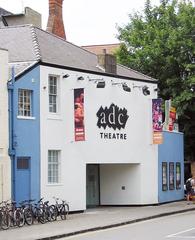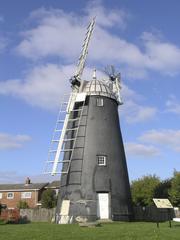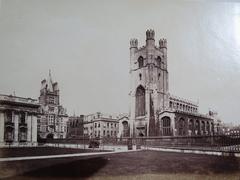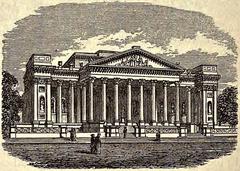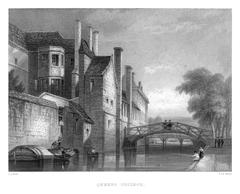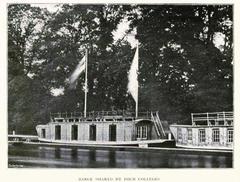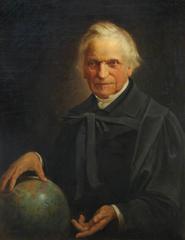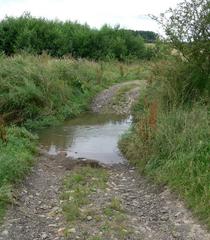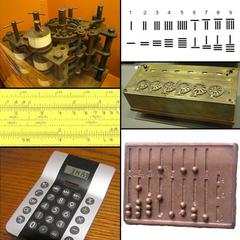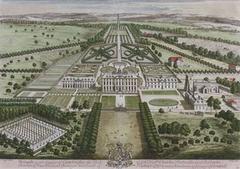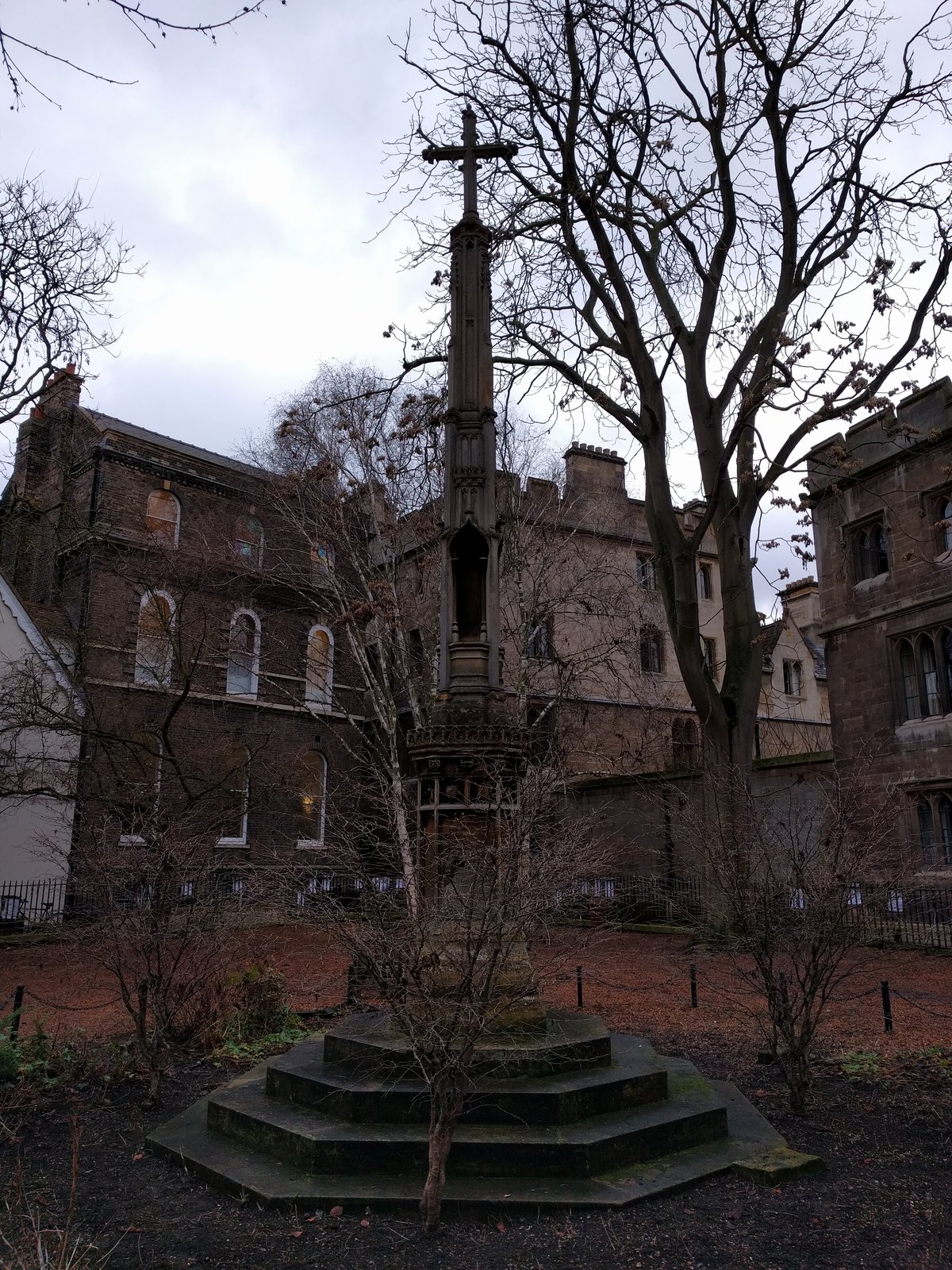
Cross In The Churchyard Of The Destroyed Church Of All Saints
Visiting the Cross in the Churchyard of the Destroyed Church of All Saints, Cambridge: A Comprehensive Guide
Date: 14/06/2025
Introduction
The Cross in the Churchyard of the Destroyed Church of All Saints, Cambridge, stands as a powerful symbol of the city’s layered religious and urban history. Situated in the heart of Cambridge, United Kingdom, this Grade II listed monument bridges medieval origins with Victorian commemoration. It not only marks the site of a vanished church but also embodies centuries of faith, community memory, and architectural evolution. This guide explores the cross’s historical significance, architectural features, visiting information, and practical tips for making the most of your experience in Cambridge (British History Online; Historic England; Capturing Cambridge).
Historical Background
Early Origins and Churchyard Crosses
All Saints’ Church, historically known as All Saints in the Jewry, was established by at least the 13th century, serving as a focal point for worship, community events, and local governance. Churchyard crosses like the one at All Saints were typical of English parishes by this time, used for processions, outdoor ceremonies, public proclamations, penance, and as sanctuary markers (Historic England; Building Conservation).
The medieval cross likely featured a stone base (socket stone), shaft, and cross head. Over centuries, many such crosses were altered or damaged, especially during iconoclastic movements in the 16th and 17th centuries. At All Saints, the original shaft and head did not survive, and by the 18th or 19th century, the cross base was adapted to support a sundial (Historic England).
Demolition and Victorian Transformation
By the mid-19th century, All Saints’ Church was considered too small and outdated for its growing parish. In 1865, the church was demolished to enable urban development and the widening of St John’s Street. Notably, elements of the old church, such as its font and memorials, were relocated to the new All Saints’ Church on Jesus Lane (British History Online; Wikipedia). The original churchyard, however, remained, and was transformed into All Saints’ Garden, a public green space adjacent to St John’s and Trinity Colleges (Greater Cambridge Planning).
Victorian Memorial Cross
In 1880, architect Basil Champneys designed a striking Gothic Revival memorial cross to mark the site of the lost church. This cross, placed in All Saints’ Garden, commemorates both the demolished church and those buried there. The pedestal bears inscriptions honoring parishioners, benefactors, and notable literary men, with the main dedication reading:
“This Cross marks the site of the Old Church of All Saints, which was taken down in 1865, and also commemorates the Literary Men, Benefactors and other Parishioners whose names are inscribed on the faces of the pedestal. The souls of the righteous are in the hand of God.”
(Victorian Web)
Architectural Features
The cross combines elements of medieval and Victorian design. It features:
- Octagonal Base: Symbolizing regeneration and eternity, common in English churchyard crosses (Historic England).
- Stepped Calvary: Elevates the cross both physically and symbolically as a beacon of faith (Building Conservation).
- Shaft and Sundial: The surviving shaft (and in some versions, a sundial) illustrates adaptive reuse over centuries.
- Victorian Gothic Details: Decorative panels, inscriptions, and careful stonework reflect Victorian craftsmanship and reverence for medieval precedents (Victorian Web).
Heritage Status and Conservation
This cross is a Grade II listed structure, protected under the Planning (Listed Buildings and Conservation Areas) Act 1990 (Historic England; Historic England). Such designation recognizes its special architectural and historic interest, ensuring careful stewardship and preservation. Conservation efforts focus on preventing further erosion and maintaining accessibility for future generations.
Social, Cultural, and Spiritual Importance
Churchyard crosses have long served as places for prayer, markers of sacred ground, and centers for community life. At All Saints, the cross continues to:
- Sanctify the site of the former church.
- Commemorate those who worshipped and were buried there.
- Offer a focal point for local memory, reflection, and occasional community events (Capturing Cambridge; National Churches Trust).
Visitor Information
Location and Directions
- Address: All Saints’ Garden, St John’s Street, Cambridge, United Kingdom.
- Access: Short walk from city center, St John’s College, and Trinity College. Accessible via public transport or bicycle. Limited street parking nearby.
Visiting Hours and Admission
- Open: Daily, from dawn until dusk.
- Admission: Free; no ticket required.
Accessibility
- Paths: Mostly paved, but some uneven terrain near the cross and gravestones.
- Wheelchair Access: Generally accessible, but some surfaces may be challenging.
Facilities
- On-Site: No restrooms or visitor centers.
- Nearby: Cafés, shops, and public amenities in central Cambridge.
Etiquette and Photography
- Photography: Allowed for personal use; please respect ongoing commemorative activities.
- Conduct: Remain respectful—this is a site of remembrance and reflection.
Enhancing Your Visit
Guided Tours and Events
- The cross is included in many Cambridge walking tours focusing on medieval and ecclesiastical heritage.
- Check with local tour companies or the National Churches Trust for special tours or heritage open days.
Interpretation and Visual Resources
- On-site signage is limited; consult online resources for historical context (Historic England; Capturing Cambridge).
- Virtual tours, audio commentary, and images are available via the Audiala app and local tourism websites.
Nearby Attractions
- Historic Colleges: St John’s, Trinity, Sidney Sussex, and Jesus College.
- Market Square: A short walk away for shopping and dining.
- Museums: Fitzwilliam Museum and others within easy reach.
Travel Tips
- Visit Early/Late: For quieter atmosphere and best lighting for photography.
- Footwear: Wear comfortable shoes for uneven terrain.
- Combine Visits: Plan a walking route including other medieval sites in central Cambridge.
- Check Events: Look for heritage open days or community gatherings for a richer experience.
Frequently Asked Questions (FAQ)
Q: Do I need a ticket to visit the cross?
A: No, entry is free and does not require a ticket.
Q: What are the visiting hours?
A: The churchyard is open from dawn until dusk, year-round.
Q: Is the site accessible for wheelchair users?
A: The main paths are accessible, though some uneven ground may pose challenges.
Q: Are guided tours available?
A: Yes, the site is included in many Cambridge walking tours, and special tours may be offered by local heritage groups.
Q: Can I take photographs?
A: Yes, photography is welcomed for personal use.
Further Resources
- British History Online
- Historic England Listing: Cross in All Saints Churchyard
- Historic England Listing: All Saints Churchyard Cross
- All Saints’ Garden Historic Core Appraisal, Greater Cambridge Planning
- Capturing Cambridge
- Victorian Web: Basil Champneys and the All Saints Memorial Cross
- Building Conservation: Stone Crosses in Britain
- National Churches Trust
Conclusion
The Cross in the Churchyard of the Destroyed Church of All Saints is more than a historical monument—it is a living symbol of Cambridge’s enduring spirit, bridging centuries of transformation. Its free and open access, evocative design, and central location make it an essential stop for anyone exploring the city’s past. Enhance your visit with the Audiala app for guided tours and multimedia content, and immerse yourself in the rich tapestry of Cambridge’s heritage.

